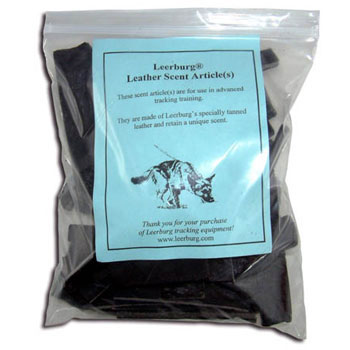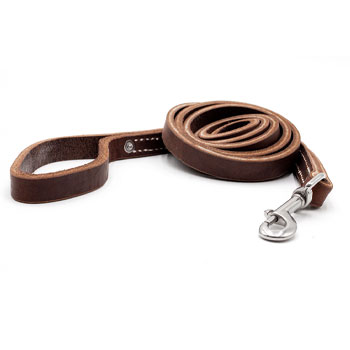Choose how you want to learn!
*To receive instant streaming access, you must be logged in with your Leerburg account during checkout.
Key Features
- 2 hours, 1 minute long
- Released 2003
- Instructor: Ed Frawley
Product Description
One of the most dangerous tasks that any K9 handler faces is a felony building search. Training a police service dog to search buildings is also one of the most difficult jobs that every K9 handler faces.
This police k9 training DVD was done with the help of Kevin Sheldahl. Kevin is an International Police Dog Judge for WPO, DPO and PSP. He is also a full time K9 handler and head of K9 training for a large Sheriff’s Department in the South West.
The goal of our video is to show new police K9 trainers how to approach the task of training the building search. We will show handlers how to teach their dogs that the primary tool a dog must learn to use during a building search is his nose.
- Too often poorly trained dogs rely on their eyes more than their nose to search a building.
- Too often poorly trained dogs find the odor of a hidden suspect only to leave that odor and then never actually find the suspect.
- Many police dogs find passive suspects in a building, but then fail to indicate or engage the suspect.
When dogs develop bad habits and miss suspects they expose their handlers to unnecessary dangers. Our video hopes to show handlers how to improve their training and reduce their personal risk during a building search. This tape is not intended to teach handlers the personal tactical skills that they must learn to do a safe building search. I have two training videos that teach handlers how to safely search a building.
New trainers often underestimate the complexities involved in training their dog to do building searches. They tend to skip training steps because they assume that their dogs already have the necessary skills to do the work. Too often they are wrong.
Here is a list of skills a dog must learn to do a successful building search:
- He must be able to bark and hold (or find and bite), in a building, with a clean out
- He must be able to be directed, by the handler, to search a specific area that the handler wants searched
- He must be able to recognize the odor of a hidden suspect and understand that he is to alert on that odor without actually seeing the suspect
- He should be able to be called back from a suspect that he has alerted on
- He must be able to protect himself or his handler if attacked by a suspect
To most service dog trainers these seem like pretty basic exercises. But let me play the devils advocate and talk about some of the issues new dogs have when facing building search training for the first time.
If dogs are anything, they are creatures of habit. By the time they reach the point in their training where they are ready to start learning to do a building search, they have developed certain routines or habits which will need to be expanded and/or changed to allow them to become comfortable working in a building at night.
Topics Covered
Many dogs that are sold as police dogs have come from Europe where they have lived their entire life as a kennel dog. They have seldom gone into buildings. Some of these dogs will become distracted when first taken into an unfamiliar building. This shouldn’t happen but it often does.
Most new service dogs have never done bite work in a building. The only bite work they have ever been exposed to has been on a training field. Whether it’s a Schutzhund field or a KNPV field, it’s always been outside. Many dogs need to learn that it’s OK to bite in a building.
Most dogs have only done bite work during daylight hours. Now they must learn to work in the dark.
Up to this point in training, the dogs have always been able to see the helper that they have indicated on. Visual contact has become an important issue to the dog. Now they must learn to indicate on a suspect they cannot see. They must learn to indicate on the odor of a suspect. This is an important concept that is often missed. While it may seem pretty obvious when I talk about it right now, new handlers often underestimate how difficult it is to retrain a dog to indicate on odor and not vision.
During early bite development, when dogs were called back to their handlers they learned that the apprehension work was probably ending or at least delayed after being called back, so they went down in drive. This must change in building search training. The dog must remain in drive after being called back from searching one part of a building and he must remain in drive after he has found a suspect and that suspect has been taken into custody and out of the building.
Up to this point in training the dog has been under direct supervision of his handler. There will be times during a building search when a dog will have to work on his own, independent of the handler. This is something that needs to be taken into account when designing a training program. We must set up scenarios where the dog is forced to make decisions.
The steps to teach dogs how to do a building search are:
- Pursuits into a building
- Announcements
- Learning indications in a building
- Learning to work the odor cone
- Control work and passive suspects in a building
- Muzzle work in a building search
- Directed searches and multiple suspects
- High finds in a building
- Search tactics and backup officers
Outline
- We will begin with a short discussion on making sure you have the right dog for the task
- We will explain exactly what skills a dog must know before starting building search training
- We will help you identify problems that exist from earlier training
- We will then take you through the training steps of a building search
Prerequisites
Every aspect of dog training is built on a foundation of previously learned skills. Teaching the building search is no different, it can only begin after the dog has learned a foundation of other skills. If this foundation is not in place before the training starts, the handler is setting himself up for problems.
There is an old saying that it takes 30 repetitions to teach a dog a new skill and 60 repetitions to fix a problem in a poorly trained skill. So the moral of the story is to take your time, build on a strong foundation and do the training steps.
The foundational skills that a dog must know before he starts building search training are:
- He must be doing pursuit bites
- He must know a recall
- He must understand Bark and hold
- He must understand the out exercise
- He must understand on leash wind scenting
These are the previously learned skills that you must bring to the table if you expect your dog to start to learn how to search buildings. If your dog is not proficient in all of these skills then you are premature in expecting him to learn to do a building search.
If you think you can start this training when your dog is not proficient in one or more of these skills, you will develop problems that will only take more time to correct down the road.
It’s not the goal of this tape to teach you how to build these foundational training steps. There is too much to building search training to go into detail on bite development. These skills are covered in my other training videos.
Acknowledgements
I would like to thank the following Police K9 Handlers for their assistance in producing this dvd:
- Kevin Sheldahl
- Todd Kurtzhals
- Mike Graff
- Van Eldredge
- Victor Hernandez
- Andy Adee
- Terry Matthews
- Mark Van der Bloomen
Have you used this product?
Your review helps others choose the right products for their dogs. Let them know what you think!
Write a ReviewTraining Building Search for Police Service Dogs






